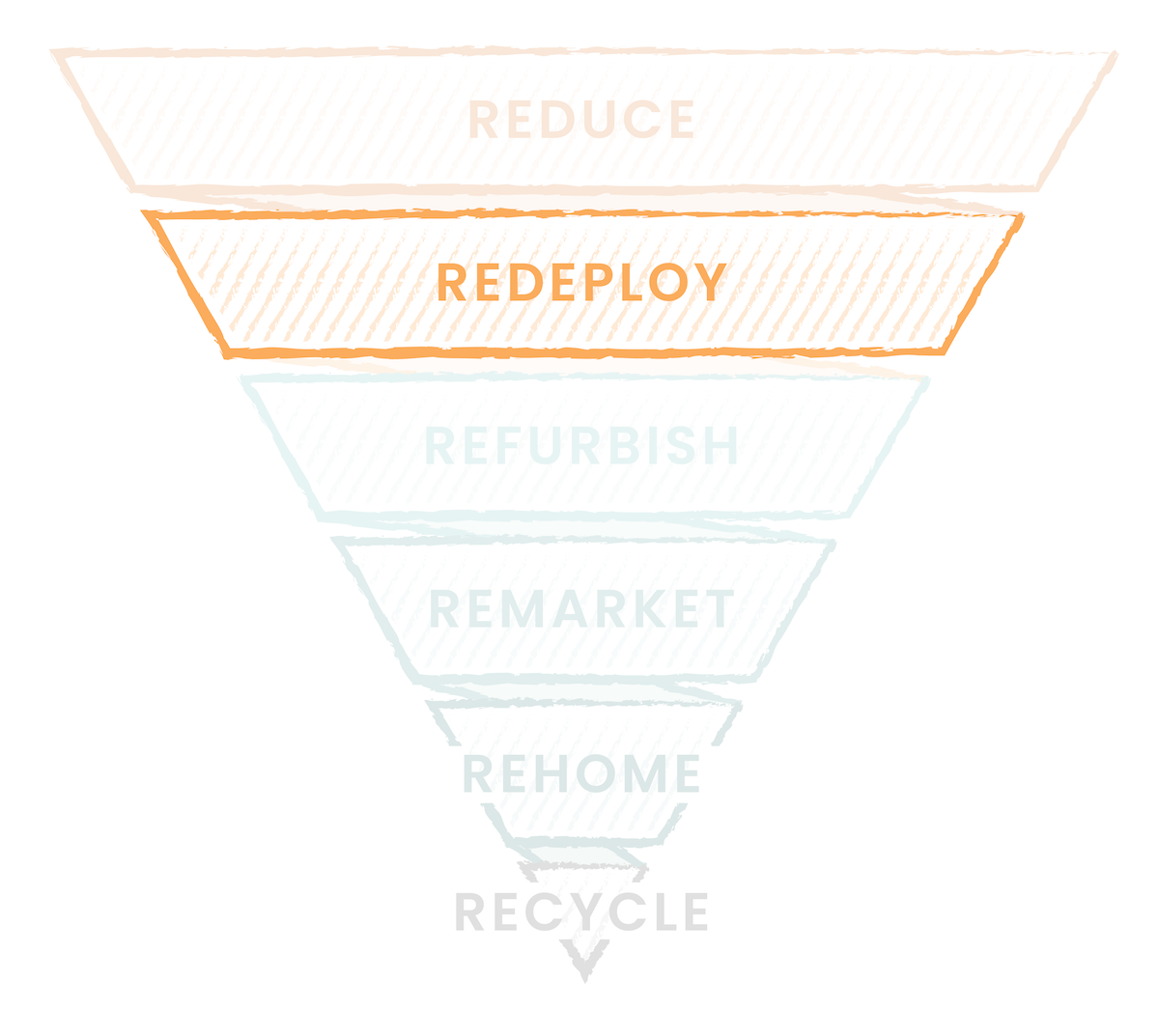6 Ways to Be More Sustainable in Your Tech Supply Chain
April is Earth Month and is dedicated to raising environmental awareness and creating consciousness around the issues that affect our planet and ecosystems. First celebrated in 1970, Earth Month has become a global event, and in 1992 the United Nations became actively involved, further increasing its visibility.
MCPC has a strong commitment to sustainability and as part of our technology services, we sustainably recycle electronic devices and destroy data. In fact, sustainability is one of our organization’s core pillars.
There are many versions of the recycle pyramid so we thought that we would create one specifically focused on technology. The Three Rs: Reduce, Reuse, and Recycle, are also frequently mentioned when speaking of recycling, but we believe that 6 Rs is more accurate to account for the complexity of technology sustainability.
Our take on the recycle pyramid, specifically focused on tech, includes our 6 Rs: Reduce, Redeploy, Refurbish, Remarket, Rehome, and Recycle. These “layers” are ordered from top to bottom by amount of effort and energy required to accomplish them; actions that require less effort at the top of the pyramid, those with more energy required at the bottom.
The most impactful type of recycling is reuse. It is so important that the entire middle of our tech recycling pyramid is focused on different strategies to reuse devices.

Let’s dive into each layer of the technology recycling pyramid, one by one.
REDUCE
There are several ways to reduce in your technology supply chain. Reusing peripherals such as monitors, docking stations, and mice saves resources, but if that’s not possible, shipping a laptop, docking station, headset, and other peripherals in one box can eliminate several boxes. This reduces material that needs to be shipped and packaging material, which can be reused or recycled.

REDEPLOY
Many times, device redeployment may be an option. This is especially true if some of your team members have a job that requires the most advanced devices on the market. A tech partner can provide you a redeploy program that cascades devices from power users to more modest users – a simple, effective act that can both reuse your paid-for technology and keep it out of landfills.

REFURBISH
Used devices can be renewed and refurbished and given a new lease on life. A responsible technology partner can help you collect your in-field devices and manage the reverse logistics to have them returned. Then, they can be completely cleaned, the on-board data destroyed, repaired (if needed), and the operating system and software reinstalled or reimaged, based on your needs.

REMARKET
When your devices reach the end of their useful lives, you may be able to recapture some residual value by remarketing them. A technology partner can track the fair market value of your older technology and if it still has value, can resell it to other organizations (after cleaning and destroying device data, of course). This reuse allows you to retain some of your device fleet’s value, and again, keep it out of a landfill.

REHOME
A great way to be more sustainable and keep older, used devices out of landfills is to rehome them. Donating your used laptops, smartphones, and tablets to charity provides an entirely new audience access to technology. If you choose this option, you’ll want to use a partner that performs a complete erasure of all data on the device, cleans it, and disinfects it so its new owners receive a like-new device.

RECYCLE
At the bottom of the technology recycle pyramid is recycling. If your technology has no value after it is retired, e-recycling may be the only option and the last resort. Work with a partner that maintains strict e-recycling standards and never deposits waste in a landfill, never incinerates it, and never exports toxic components to developing countries. Even better is working with someone that can provide transparency into how and when your devices are recycled and can prove that they are disposed of sustainably and in compliance with environmental regulations.

What happens to your devices when they’re recycled?
E-recycling is basically a process of separating components. Devices are dismantled, and components separated by type: power cords, plastic housings, metal brackets, circuit boards, LCD screens, etc. Then, these components are typically processed by specialized recycling partners so they can be used to manufacture new products.
There you have it: 6 ways to be more sustainable in your tech supply chain.
Technology sustainability is complex but with effort, it can be accomplished. MCPC manages our clients’ entire technology lifecycle so that it is as sustainable as possible. If you’d like to learn how a tech partner like MCPC can help you become greener and reach your sustainability goals, contact us to have an introductory conversation.
We’re the Outcome Engineers. MCPC is a global endpoint management company, founded in 2002, and our approach inspires not just endpoint defense, but business offense. By protecting your devices, bringing simplicity to endpoint management complexity, and empowering employee performance, we reduce your business risk and increases digital innovation. Our consultative approach creates a true partnership where your endpoints are just the starting point.